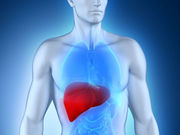Achievement of subcirrhotic range of liver stiffness with antiviral therapy reduces HCC risk
MONDAY, July 10, 2017 (HealthDay News) — For patients with chronic hepatitis B (CHB), achievement of subcirrhotic range of liver stiffness (sc-LS) with antiviral therapy (AVT) is associated with reduced risk of hepatocellular carcinoma (HCC), according to a study published online June 30 in the Journal of Gastroenterology and Hepatology.
Byung Seok Kim, from the Catholic University of Daegu School of Medicine in South Korea, and colleagues enrolled 209 patients with CHB-related advanced fibrosis or cirrhosis who received paired transient elastography examinations during AVT between 2007 and 2012. The authors examined whether achievement of sc-LS reduced the risk of developing HCC.
During the study period, the researchers found that after two years of AVT, 67.0 percent of patients achieved sc-LS and 13.4 percent of patients developed HCC. The achievement of sc-LS after AVT was independently correlated with reduced risk of development of HCC, on multivariate analysis (hazard ratio, 0.485; P = 0.047); older age and male gender correlated with increased risk (hazard ratios, 1.071 and 3.704, respectively; both P < 0.5). The risk of HCC development was increased for patients with a cirrhotic range of LS value after two years of AVT versus those with sc-LS (log-rank test, P = 0.020).
“The achievement of sc-LS after AVT can reduce the risk of HCC development in patients with CHB, even when advanced fibrosis or cirrhosis is apparent on starting AVT,” the authors write.
Copyright © 2017 HealthDay. All rights reserved.








